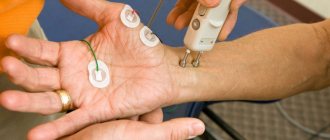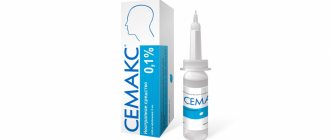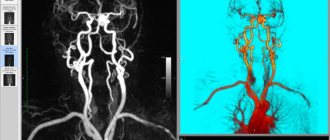Why is ADHD dangerous?
Impaired attention and hyperactivity in children lead to the fact that a school-age child with normal or high intelligence has impaired reading and writing skills, cannot cope with school assignments, makes many mistakes in completed work and is not inclined to listen to the advice of adults. The child is a source of constant anxiety for those around him (parents, teachers, peers), as he interferes in other people’s conversations and activities, and overreacts to external stimuli (the reaction does not correspond to the situation). Such children have difficulty adapting to a team; their clear desire for leadership has no basis in fact. Due to their impatience and impulsiveness, they often come into conflict with peers and teachers, which aggravates existing learning disorders. A child with attention deficit is also unable to foresee the consequences of his behavior and does not recognize authorities, which can lead to antisocial acts. Antisocial behavior is especially common in adolescence, when children with attention deficit hyperactivity disorder have an increased risk of developing persistent behavioral disorders and aggressiveness.
Treatment of ADHD in Orenburg
A psychologist working with a diagnosis of ADHD carries out the following correctional work: classes with children to develop behavior control skills, the ability to predict the consequences of actions, plan their activities, practice relaxation skills, and inhibit children’s hyperactivity.
A significant role in the treatment of ADHD is played by the work of a psychologist with parents of children with ADHD: informing about the latest research data, correcting the education system, stabilizing parent-child relationships, independent activities with children with ADHD at home.
An additional recommendation for correction is a conversation with teachers, because Increasingly, such students are found in the classroom, and teachers do not know how to behave correctly and competently in order to ensure peace of mind and a harmonious environment in the classroom.
A child psychologist at PsiMedClinic successfully works with children with attention deficit hyperactivity disorder. You can make an appointment by phone or using the feedback form.
Types of ADHD in children
There are 3 types of attention deficit hyperactivity disorder depending on the symptoms:
- Syndrome combining attention deficit hyperactivity disorder
- Attention deficit disorder without hyperactivity
- Hyperactivity disorder without attention deficit disorder
The incidence of attention deficit hyperactivity disorder, according to various authors, varies from 2.2 to 18% in school-age children. Almost every school class has at least one child with this disease. Boys suffer from ADHD 2 times more often than girls, and boys are more likely to have isolated hyperactivity or hyperactivity in combination with attention disorders.
Symptoms
The main symptoms of ADHD are considered to be:
- Inattention - manifests itself in the child’s inability to maintain attention to details, carelessness in doing homework, forgetfulness, and distractibility in class. Children avoid difficult tasks, experience difficulty in performing sequential actions and the inability to allocate time to complete a task.
- Hyperactivity and impulsiveness - in the form of restless movements in different parts of the body, inability to sit still for a long time, aimless motor activity, constant agitated movement, talkativeness, inability to wait one’s turn when answering a question, interference without asking in other people’s affairs, games, interrupting someone else’s activities.
Symptoms of the disorder in some cases may extend into adulthood: 2/3 to 3/4 still have symptoms in adulthood.
ADHD syndrome is not the whims of a child, “not a mockery” of parents and teachers
The causes of attention deficit hyperactivity disorder are largely due to biological and genetic factors.
The basic cause of the ADHD disorder is a consequence of deficits in brain structures (inhibition processes in the brain are disrupted, later the frontal structures responsible for planning, behavior control, and predictive abilities mature). Children with ADHD did not choose to be this way, so we adults need to help them.
Symptoms and diagnosis
A diagnosis of attention deficit disorder can be made if at least 6 of the symptoms described below are present. A child has an attention deficit disorder if he/she: Does not pay attention to details and makes mistakes in work Has difficulty maintaining attention during work and play Does not listen to what is told Unable to follow instructions Cannot organize play or non-play structured activities (for example, doing homework) Has difficulty completing tasks that require long-term concentration Often loses things Often and easily distracted Is forgetful To be diagnosed with hyperactivity, at least 5 of the following symptoms must be present. A child is hyperactive if he: Makes fussy movements with his arms and legs Often jumps out of his seat Hyperactive in situations where hypermobility is unacceptable Cannot play “quiet” games Always on the move Talks a lot A child is impulsive if he: Answers a question without after listening to him Cannot wait for his turn Interferes in the conversations and games of others Mandatory characteristics of ADHD are also: Duration: symptoms are observed for at least 6 months Persistence, spreading to all areas of life: adaptation disorders are observed in two or more types of environment (for example, at school and at home) Severity of impairments: significant impairments in learning, social contacts, professional activities Other mental disorders are excluded: symptoms cannot be associated solely with the course of another disease
Diagnostic criteria for ADHD.
The diagnostic criteria and signs of ADHD are described in detail in the American manual DSM-5 and the European International Classification of Diseases ICD-10. In general, according to these guidelines, the variety of symptoms associated with ADHD fits into 3 large groups:
- actual attention deficit
- hyperactivity or increased mobility
- impulsiveness or incontinence
Perhaps the most important group of symptoms from the point of view of a child’s school “functioning” is associated with a violation of the function of attention, and the criterion for a violation is the presence of 6 or more different manifestations of inattention, occurring over a period of more than 6 months and seriously disrupting the child’s social behavior and his school performance.
Possible options for attention disorders may look like this:
- the child often loses sight of, “loses” details of class or homework, and makes a large number of careless and difficult to explain errors when completing a task;
- has difficulty maintaining attention for long periods of time in class, during a lecture, or while completing a long assignment;
- the child often cannot answer the question addressed to him, being in prostration and with an absent look;
- often the child is not able to independently complete class or homework, unsuccessfully spending all the allotted time on it;
- often has difficulties organizing and planning his actions and activities in general, cannot complete a task on time, cannot independently plan the implementation of various tasks;
- the child often resists and avoids completing tasks that he does not like, which he does not understand and which require effort to understand;
- often loses various things and objects, including those necessary for studying at school - pens, notebooks, keys, glasses, etc.
- easily distracted by extraneous stimuli both at school and at home;
- characterized by increased forgetfulness - forgets notebooks, pencils and pens at home, forgets to complete an assignment, forgets to write down homework in a diary, forgets about planned activities, etc.
Hyperactivity can manifest itself in the following specific behaviors of a child:
- the child’s behavior often contains restless and incessant movements of the arms and legs; he cannot sit still in a chair – he fidgets all the time;
- the child cannot stand sitting still for any length of time, especially when it is necessary, for example, during a class at school, at a play in the theater, etc.
- The child runs around a lot and constantly, constantly climbs somewhere, opens something, touches, moves, etc.
- the child cannot stand it for a long time, playing quietly and calmly, periodically jumps up and runs, distracted by something else;
- such excessive and chaotic motor restlessness has a persistent character, independent of any restrictions and requirements of external conditions.
Finally, impulsivity can manifest itself in the following ways:
the child has a habit of answering questions without thinking and without fully listening to what is being asked; Can't wait his turn. when communicating, the child constantly interrupts the speaker, regardless of whether he is a peer or an adult; the child is talkative and unrestrained, can suddenly say an offensive or even insulting thing for no reason, can talk as if he has no internal “brakes.”
Similar diagnostic criteria are detailed in these guidelines also for both the hyperactive and impulsive symptom groups of ADHD.
What causes ADHD?
The formation of ADHD is based on neurobiological factors: genetic mechanisms and perinatal damage to the central nervous system (damage to the brain and spinal cord that occurs during pregnancy, childbirth and the early postpartum period), which can be combined with each other. It is they who determine changes in the functioning of the nervous system and disorders of higher mental functions and behavior that correspond to the picture of the syndrome. In many cases, additional influence on children with ADHD is exerted by negative socio-psychological factors (primarily intra-family), which in themselves do not cause the development of ADHD, but always contribute to an increase in the child’s symptoms and adaptation difficulties. Disorders associated with ADHD (so-called comorbid disorders). Additional difficulties in family, school and social adaptation in children with ADHD may be associated with the formation of concomitant disorders that develop against the background of ADHD as the underlying disease in at least 70% of patients. Comorbid disorders in ADHD are represented by the following groups: oppositional defiant behavior, anxiety disorders, mood disorders, speech development disorders, learning difficulties, lack of coordination, awkwardness, tics). Other related ADHD disorders may include sleep disturbances and involuntary urination during sleep.
How is ADHD treated?
The best results in the treatment of attention deficit hyperactivity disorder are achieved by combining various methods, but a neurologist must decide on the complex of necessary treatment measures. When treating ADHD, our doctors use a unique method of Biophysical neuromodulation, which triggers the internal mechanisms of self-regulation of the central nervous system structures and is able to restore the normal development of the child, positively affecting cognitive functions (attention, memory, speech). In addition, our method has a positive effect on metabolic processes in the nervous system and promotes the maturation of new brain cells. In cases where ADHD is combined with destructive behavior, anxiety disorders, and neuroses, treatment is combined with micropolarization and interactive adaptive neuro-biofeedback training, which enhances synaptic transmission in different brain structures. Often, sleep and behavior disorders accompanying ADHD require additional sessions with a neuropsychologist. Another direction of ADHD therapy is to control negative nutritional and environmental factors that lead to the entry of toxic substances into the child’s body (lead, pesticides, food coloring, preservatives). Among the micronutrients with a proven clinical effect in ADHD, magnesium preparations should be noted. Thus, treatment for attention-deficit/hyperactivity disorder should begin early (immediately after diagnosis), be comprehensive, continuous and long-term.
How to treat ADHD - attention deficit hyperactivity disorder?
Photo from huffingtonpost.com Read the first part of the article (about diagnosing ADHD) here.
Passionate controversy surrounds the use of drugs. In the United States, stimulants are used to relieve symptoms of ADHD, the most common of which is Ritalin (methylphenidade). Their use is sharply criticized by some experts and the public; the World Health Organization has expressed concern about them, but a number of medical agencies insist on the effectiveness and safety of stimulants.
The studies supporting the effectiveness of stimulants and the contrary studies showing ineffectiveness, harmful side effects, and the risk of addiction to cocaine during adolescence in children who took stimulants for a long time could be devoted to a separate article.
Both in the West and in Russia, in order to reduce the hyperactivity and excitability of a child, antipsychotic drugs (Sonapax, Neuleptil, Rispolept, Abilify, Seroquel) are widely used. Meanwhile, studies show that these drugs reduce the volume of brain tissue, not to mention such side effects as weight gain, increased cholesterol levels in the blood, increased blood pressure, the development of diabetes, tremors, and even tardive dyskinesia.
In the UK, the right to prescribe antipsychotics is given not only to specialists, but also to pediatricians. In 2011, the British discovered that over the past 10 years the number of children taking these drugs has doubled, and many of them are those who are barely 5 years old.
This impressed the government, which decided to allocate £32 million to expand mental health services for children and young people.
As mentioned in the first part of the article, it is very important to conduct a medical examination of a child with ADHD. In some cases, by taking control of physical problems, it is possible to reduce the symptoms of hyperactivity and attention problems. For example, this occurs when normal blood supply to the brain is restored after correction of birth injuries to the cervical spine.
In Russia, to improve brain metabolism and increase cortical tone, children with ADHD are often prescribed nootropic drugs (piracetam, encephabol, akatinol memantine, glycine, phenibut). We often hear from doctors that they observe a positive effect from drugs in their practice, but their effectiveness has not been clinically proven.
The image of a child with an unnamed diagnosis of ADHD - inattentive in class, doing poorly in school, unfocused at home - is often used to advertise multivitamins. I drank the Alphabet and immediately mastered the alphabet and other academic knowledge and skills. In fact, it is unlikely that multivitamins will have this effect. This does not exclude the possibility that a number of specific nutrients may have a positive effect on ADHD symptoms.
There are studies (like this one) showing the depletion of omega-3 fatty acids in children and adolescents with ADHD, as well as the beneficial effects of taking them (like this one). The best source of omega-3 fatty acids is fish oil, which is beneficial in many ways and has no harmful side effects, except for individual intolerance.
But in this French study, 40 children with symptoms of ADHD took vitamin B6 (0.6 mg per 1 kg of body weight) and magnesium (6 mg per 1 kg of body weight) daily for 8 weeks. The study participants showed a significant decrease in hyperactivity and aggressiveness, and improved attention. Children in the control group who took placebo showed no such changes. A few weeks after the end of the course, ADHD symptoms in children from the experimental group resumed, which also suggests that the improvements were ensured by taking B6 and magnesium.
For a child and adolescent with ADHD, nutritional structure plays an important role. Some parents are very pleased with the effects of a gluten-free/casein-free diet (which eliminates the protein gluten, found in wheat, rye, and some other grains, and casein, found in milk), which is often recommended for children with autism who share some of the symptoms with ADHD. (Mercy published a detailed article on the gluten-free diet). Others praise the polysaccharide-free diet (excluding polysaccharides, that is, sucrose and starches), which in Russian-language sources is also called a specific carbohydrate diet or paleo diet, and in English-language sources – SCD, GAPS, Paleo Diet.
A recent meta-analysis by Danish scientists suggests that the best results for ADHD were achieved by elimination diets, in which certain foods that provoke hyperactivity, impulsivity, and inattention were excluded. By the way, the same study also revealed the benefits of fish oil for children with ADHD.
Experts advise parents to identify foods to which their child may have an individual intolerance. To do this, you need to rotate foods, taking them off the diet one by one for a week or two, observing the severity of ADHD symptoms and evaluating the result.
Dr. Richard Sogn, a child psychiatrist and one of America's leading experts on ADHD, believes that children with ADHD benefit from things that are good for the brain. First of all, their diet should be rich in protein in the form of meat, eggs, nuts, cheese, and legumes. He advises giving these products to your child for breakfast, as well as as a snack between classes.
Carbohydrates are necessary, but in the form of vegetables and fruits, but it is advisable to eliminate or greatly limit sugar, sweets, flour products, rice and potatoes. It is important to include fish and other sources of omega-3 fatty acids in your diet, such as walnuts, Brazil nuts, olive oil and canola oil.
The American Academy of Pediatrics recommends eliminating foods with preservatives and artificial food colors from the diet of children with ADHD, and some experts say all food additives should be avoided.
The most important method of treating ADHD is behavioral therapy: for children this is, first of all, Applied Behavior Analysis (ABA), for adolescents and young adults - cognitive behavioral therapy (Cognitive Behavioral Therapy).
Applied behavior analysis in the USA and Great Britain is considered the gold standard for behavior correction in autistic children, but is also used in working with children suffering from ADHD.
In Russia, this method appeared not so long ago and mainly through the efforts of parent activists with continued resistance to domestic defectology and correctional pedagogy, which declared this therapy to be training. Such an opinion can only be formed after a very superficial acquaintance with this technique. In fact, it is based on a thorough analysis of the child's behavior to identify his weaknesses and strengths and create a carefully structured behavior modification program based on encouraging the child's desired behavior.
Unfortunately, outside the capital it is almost impossible to find a competent behavior analyst and therapist, but many parents complete distance courses, participate in conferences, seminars and webinars to learn the basics of therapy and help their child on their own. (You can learn more about this in the group “Center for Autism Problems”).
There are also at-home behavioral strategies that experts recommend parents use.:
- For a child with ADHD, a daily routine is very important. Make it up and make sure your child follows it.
- Organize the space so that there is a strictly defined place for all the items the child needs (clothes, toys, school supplies). This will allow the child to lose them less often.
- Avoid distractions, especially when your child is doing homework. Be sure to turn off the radio and TV during this time.
- Give your child choices, but reduce the number of options to make it easier. Offer a choice of two options for clothing, food, toys, so as not to create sensory and emotional overload.
- When you remind your child to perform a particular duty, try to keep all explanations and instructions short and clear. If possible, avoid both coaxing and the threat of punishment.
- Use visuals to highlight goals and your child's progress toward achieving them. Find a form of reward for his efforts. Be sure to ensure that the tasks are realistic and do not exceed the child’s capabilities.
- Help your child find an area in which he can apply his abilities and experience a sense of success. This will boost his self-esteem and help him develop social skills.
In general, ADHD is a diagnosis in which a child can overcome his limitations only with the help of his parents, even if it is dealt with by the most highly qualified specialists. Parents are required to have a deep understanding of the child’s problems and needs, patience and willingness to walk with him a long and difficult path to recovery or maximum adaptation for an independent successful life.
Sources:
ADHD Diets
Facts About ADHD






